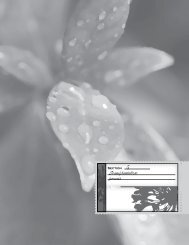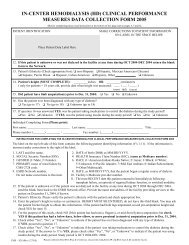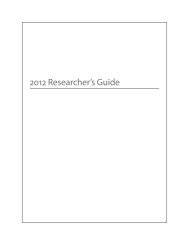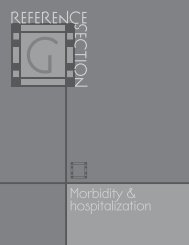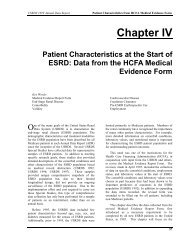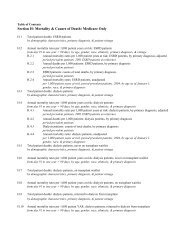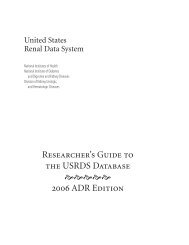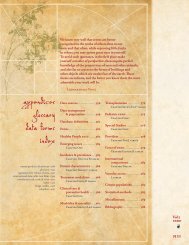end stage renal disease medical evidence report medicare
end stage renal disease medical evidence report medicare
end stage renal disease medical evidence report medicare
Create successful ePaper yourself
Turn your PDF publications into a flip-book with our unique Google optimized e-Paper software.
27. If the patient has not been informed of their options (answered<br />
“no” to Item 26), then enter all reasons why a kidney transplant<br />
was not an option for this patient at this time.<br />
28. Enter the date(s) of the patient’s kidney transplant(s). If reentering<br />
the Medicare program, enter current transplant date.<br />
29. Enter the name of the hospital where the patient received a kidney<br />
transplant on the date in Item 28.<br />
30. Enter the 6-digit Medicare identification code of the hospital in<br />
Item 29 where the patient received a kidney transplant on the date<br />
entered in Item 28.<br />
31. Enter date patient was admitted as an inpatient to a hospital in<br />
preparation for, or anticipation of, a kidney transplant prior to the date<br />
of the actual transplantation. This includes hospitalization for transplant<br />
workup in order to place the patient on a transplant waiting list.<br />
32. Enter the name of the hospital where patient was admitted as an<br />
inpatient in preparation for, or anticipation of, a kidney transplant<br />
prior to the date of the actual transplantation.<br />
33. Enter the 6-digit Medicare identification number for hospital in Item 32.<br />
34. Check the appropriate functioning or non-functioning block.<br />
35. Enter the type of kidney transplant organ donor, Deceased, Living<br />
Related or Living Unrelated, that was provided to the patient.<br />
36. If transplant is nonfunctioning, enter date patient returned to a<br />
regular course of dialysis. If patient did not stop dialysis post<br />
transplant, enter transplant date.<br />
37. If applicable, check where patient is receiving dialysis treatment<br />
following transplant rejection. A nursing home or skilled nursing<br />
facility is considered as home setting.<br />
Self-dialysis Training Patients (Medicare Applicants Only)<br />
Normally, Medicare entitlement begins with the third month after<br />
the month a patient begins a regular course of dialysis treatment.<br />
This 3-month qualifying period may be waived if a patient begins a<br />
self-dialysis training program in a Medicare approved training<br />
facility and is expected to self-dialyze after the completion of the<br />
training program. Please complete items 38-43 if the patient has<br />
entered into a self-dialysis training program. Items 38-43 must be<br />
completed if the patient is applying for a Medicare waiver of the<br />
3-month qualifying period for dialysis benefits based on<br />
participation in a self-care dialysis training program.<br />
38. Enter the name of the provider furnishing self-care dialysis training.<br />
39. Enter the 6-digit Medicare identification number for the training<br />
provider in Item 38.<br />
40. Enter the date self-dialysis training began.<br />
41. Check the appropriate block which describes the type of self-care<br />
dialysis training the patient began. If the patient trained for<br />
hemodialysis, enter whether the training was to perform dialysis in<br />
the home setting or in the facility (in center). If the patient trained<br />
for IPD (Intermittent Peritoneal Dialysis), <strong>report</strong> as Other.<br />
42. Check the appropriate block as to whether or not the physician<br />
certifies that the patient is expected to complete the training<br />
successfully and self-dialyze on a regular basis.<br />
43. Enter date patient completed or is expected to complete selfdialysis<br />
training.<br />
44. Enter printed name and signature of the att<strong>end</strong>ing physician or the<br />
physician familiar with the patient’s self-care dialysis training.<br />
45. Enter the Unique Physician Identification Number (UPIN) of<br />
physician in Item 44. (See Item 48 for explanation of UPIN.)<br />
46. Enter the name of the physician who is supervising the patient’s<br />
<strong>renal</strong> treatment at the time this form is completed.<br />
47. Enter the area code and telephone number of the physician who<br />
is supervising the patient’s <strong>renal</strong> treatment at the time this form is<br />
completed.<br />
48. Enter the physician’s UPIN assigned by CMS.<br />
A system of physician identifiers is mandated by Section 9202 of<br />
the Consolidated Omnibus Budget Reconciliation Act of 1985. It<br />
requires a unique identifier for each physician who provides<br />
services for which Medicare payment is made. An identifier is<br />
assigned to each physician regardless of his or her practice<br />
configuration. The UPIN is established in a national Registry of<br />
Medicare Physician Identification and Eligibility Records (MPIER).<br />
Transamerica Occidental Life Insurance Company is the Registry<br />
Carrier that establishes and maintains the national registry of<br />
physicians receiving Part B Medicare payment. Its address is:<br />
UPIN Registry, Transamerica Occidental Life, P.O. Box 2575,<br />
Los Angeles, CA 90051-0575.<br />
49. To be signed by the physician supervising the patient’s kidney<br />
treatment. Signature of physician identified in Item 46. A stamped<br />
signature is unacceptable.<br />
50. Enter date physician signed this form.<br />
51. To be signed by the physician who is currently following the patient. If<br />
the patient had decided initially not to file an application for Medicare, the<br />
physician will be re-certifying that the patient is <strong>end</strong> <strong>stage</strong> <strong>renal</strong>, based<br />
on the same <strong>medical</strong> <strong>evidence</strong>, by signing the copy of the CMS-2728<br />
that was originally submitted and returned to the provider. If you do not<br />
have a copy of the original CMS-2728 on file, complete a new form.<br />
52. The date physician re-certified and signed the form.<br />
53. This remarks section may be used for any necessary comments<br />
by either the physician, patient, ESRD Network or social security<br />
field office.<br />
54. The patient’s signature authorizing the release of information to<br />
the Department of Health and Human Services must be secured<br />
here. If the patient is unable to sign the form, it should be<br />
signed by a relative, a person assuming responsibility for the<br />
patient or by a survivor.<br />
55. The date patient signed form.<br />
NOTICE<br />
This form is to be completed for all End Stage Renal Disease patients beginning June 01, 2005<br />
regardless of when the patient started dialysis or received a kidney transplant. Prior blank versions<br />
of this form should be destroyed. Old versions of the CMS-2728 will not be accepted by the Social<br />
Security Administration or the ESRD Network Organizations after May 31, 2005.<br />
FORM CMS-2728-U3 (06/04)



